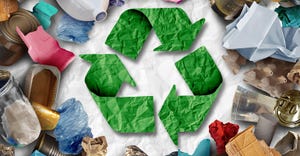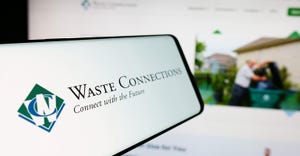Case Study: Target Embraces Recycling and Sustainability Initiatives
As part of its sustainability efforts, Target offers in-store recycling for customers.
June 29, 2011
By Allan Gerlat, Contributing Writer
Just about everyone shops at Target. Now, the company wants everyone to have the opportunity to recycle at its stores as well.
In 2010, the Minneapolis-based retailer launched a comprehensive recycling program for shoppers. All Target stores now feature recycling stations where customers can bring old plastic and glass bottles, aluminum cans, small electronics and plastic shopping bags.
“Target has recycled for many years in the back room,” spokeswoman Jenna Reck says. “This program for the first time involves our guests. It’s just an extension of what we’ve done.”
The customer recycling program is but one component of the retailer’s waste reduction and sustainability efforts. Late last year, the retailer announced that it is aiming to reduce the percentage of its waste that it sends to landfills from 42 percent in 2009 to 34 percent by 2016. Target’s other sustainability goals for 2016 include reducing water usage by 10 percent, curtailing greenhouse gas emissions by 20 percent, achieving Energy Star status from the Environmental Protection Agency for at least 75 percent of its buildings, improving the efficiency of transportation inbound to distribution centers by 15 percent and outbound transportation by 20 percent, and supporting the adoption of cleaner and more fuel-efficient transportation practices.
Measureable Results
Target’s store recycling program has produced results. From April to December of 2010, the program recycled approximately 1.4 million pounds of bottles and cans, and more than 170 million shopping bags. The program also recycles about 90 units of ink cartridges, MP3 players and cell phones per store per month.
Target’s website lets people know where the recycling is going. Electronic waste is collected by a national vendor who resells the materials for reuse; cans and bottles are recycled by local centers; plastic bags are converted by a vendor into composite decking; and food overstock is donated to Feeding America food banks.
Target says the response of its customers to the program has been positive. “People are very happy they have a resource,” Reck says. “This just gives them one more [recycling] option.”
Over the years, Target has reduced the amount of its own waste that it sends to landfills by 70 percent. The company has substantially reduced its landfilling of corrugated cardboard, electronics, shrink wrap, construction waste, carpet, ceiling tiles and roofing material. The retailer also has significantly increased its reuse and refurbishing of shopping carts, and it established one of the earliest retail garment hanger recycling programs. Overall, in 2010, Target recycled 4,000 tons of shrink wrap and plastic bags, and 4 million pounds of electronics.
The company diverts still-usable items from landfills by donating fixtures, office equipment, unsold products and food to community organizations. Target also diverts more than 50 percent of materials from its construction and remodeling projects to reuse and recycling programs.
Target also is looking to offer products and incentives to help its customers incorporate sustainable practices into their lifestyles. For example, its Archer Farms brand potato crisps now come in packaging with 25 percent plant-based plastic.
In addition, customers get five cents off their purchase for each reusable bag they use during checkout, Reck says. The company claims on its website that using a Target reusable bag 10 times will keep 25 plastic bags out of a landfill, based on the company’s calculation that each reusable bag replaces 2.5 plastic bags each time it’s used.
Opportunities for the Waste Industry
A greater emphasis on waste reduction and recycling by retailers presents opportunities for the waste industry, says Chaz Miller, director of state programs for the National Solid Wastes Management Association. “Target is like any company looking to reduce costs,” he says. “And one way they can reduce costs is to reduce waste. The challenge for the waste industry is the opportunity in recycling. What can a company offer in material management to a company like Target to achieve their goal?”
Reducing costs is one thing. But Target’s Reck says the company isn’t seeing a lot of revenue from recycling. The retailer is taking in revenue in some instances but in other instances recycling represents an expense. “The goal isn’t to make money,” she says. “It’s to provide a service.”
Reck says the next big challenge for Target is communication. “It’s letting more of our [customers] know [about our environmental efforts],” she says. For example, some stores have an optical recycling option, in which old collected glasses are donated. The company wants to do a better job about getting the word out about those types of programs.
Miller says it’s “absolutely” in the company’s best interest to make sure people know what they’re doing environmentally. “Some companies have been doing good things for years, but never bothered to tell anyone,” he says. Toward that end, Target has its own website for its sustainability efforts, at target.com/hereforgood. It includes a corporate scorecard that provides regular updates about the company’s sustainability progress.
Allan Gerlat is a Sagamore Hills, Ohio-based writer. He is the former editor of Waste and Recycling News.
You May Also Like


